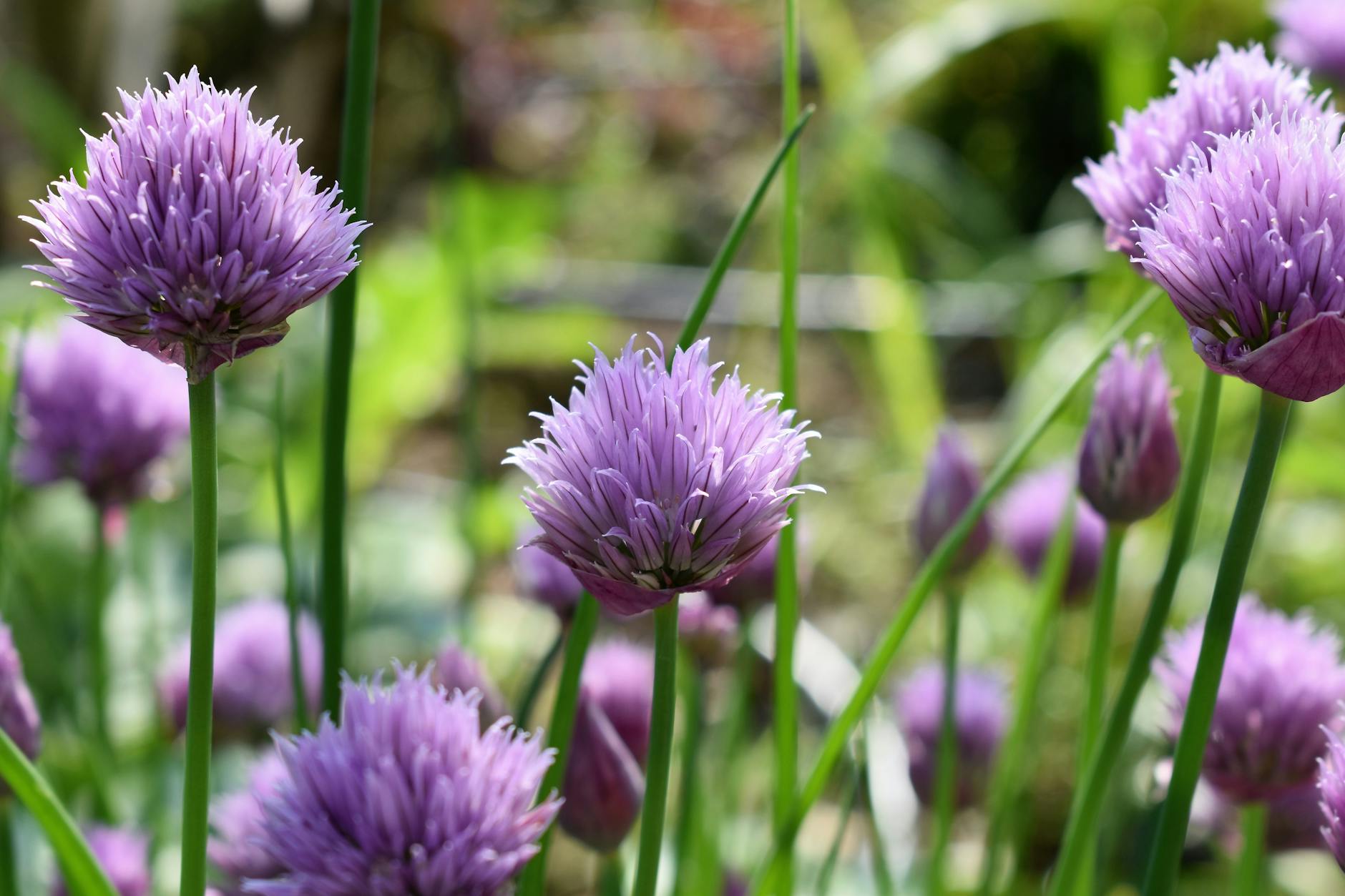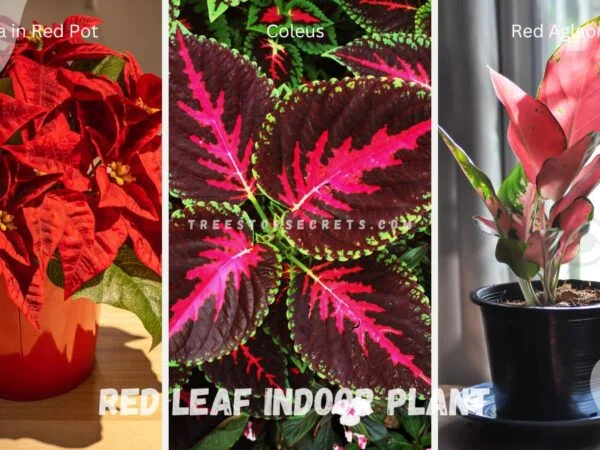Purple Flowers
Meanings and Symbolism
Purple flowers are rich in meaning and symbolism. They are often associated with success, royalty, admiration, and tradition (1800flowers).
Some specific meanings include:
- Success and Royalty: The color purple has historically been linked to nobility and prestige.
- Admiration and Tradition: These flowers can convey respect and honor, often used in ceremonies and commemorations.
- Faith and Wisdom: Purple irises, for instance, symbolize faith, hope, wisdom, and courage.
- Passion and Romance: Purple lilies are known for symbolizing passion and romance.
Popular Purple Flower Types
Many types of purple flowers are beloved by gardeners and flower enthusiasts. Here are some popular varieties:
| Flower Type | Symbolism | Characteristics |
|---|---|---|
| Clematis | Intelligence, mental beauty | Climbing plant with large, showy blooms |
| Iris | Faith, hope, wisdom, royalty | Graceful flower with intricate petal patterns (Gardenia) |
| Allium | Unity, patience | Spherical clusters of small star-shaped flowers |
| Bellflower | Gratitude, humility | Bell-shaped flowers, often found in shades of purple |
Additional notable purple flowers include:
- Lavender: Known for its stress-relieving fragrance, lavender has tiny lavender buds that grow on silvery-gray spires.
- Purple Lily: Symbolizing passion, romance, and rejuvenation, these flowers are staples in romantic bouquets.
- Allium: These flowers symbolize unity and patience with their unique spherical clusters of small star-shaped blooms.
Purple flowers not only add a touch of elegance and beauty to gardens and floral arrangements but also carry deep meanings and symbolism, making them a cherished choice for many occasions.
Green Flowers
Symbolism of Green Flowers
Green flowers are often associated with themes of rebirth, renewal, good health, good fortune, and youthfulness (1800flowers). They symbolize the essence of nature and bring a sense of tranquility and balance. In various cultures, green flowers are used to convey messages of hope, prosperity, and vitality.
Green orchids, in particular, hold special significance. They are linked with longevity, good health, and blessings. In Japan, green orchids are placed in homes or offices to bring "good fortune" in life and business, making them a thoughtful gesture for someone in need of luck or blessings (Allan's Flowers & More).
Examples of Green Flowers
There are several beautiful green flowers that can add a unique touch to any garden or floral arrangement. Here are a few examples:
| Green Flower | Description |
|---|---|
| Bells of Ireland | Known for their tall, green spikes, they symbolize good luck and are often used in arrangements for their striking appearance. |
| Button Flowers | These small, pompom-like flowers add texture and interest to bouquets and are often used as filler flowers. |
| Green Cymbidium Orchid | This elegant orchid is associated with nature and good fortune, making it a popular choice for both homes and offices. |
| Anthurium | Known for their shiny, heart-shaped leaves, anthuriums are often used in tropical floral arrangements. |
These green flowers not only bring a fresh and vibrant look but also carry deep meanings and symbolism that can enhance the message of any floral gift or decoration.
Unique Purple Flowers
Purple flowers bring an air of mystery and elegance to any garden. Let’s explore some of the unique purple flowers that stand out for their beauty and distinctive qualities.
Foxglove
Foxglove is known for its tall, dramatic spikes covered in tubular flowers. This plant blooms in midsummer and comes in a wide array of colors, including a stunning purple. The flowers form a striking display that can reach heights of up to six feet.
However, caution is necessary as Foxglove contains cardiac glycosides, which can be dangerous for individuals with cardiac issues. Its beauty is undeniable, but it should be handled with care.
| Feature | Details |
|---|---|
| Bloom Time | Midsummer |
| Height | Up to 6 feet |
| Toxicity | Contains cardiac glycosides |
Monkshood
Monkshood gets its name from its resemblance to a monk's habit. This flower grows on a tall stem and blossoms in a deep shade of purple. It's a favorite among gardeners for its unique shape and vibrant color.
Monkshood is highly poisonous and should be handled with care (Proflowers). Despite its toxicity, its dramatic appearance makes it a captivating addition to any garden.
| Feature | Details |
|---|---|
| Bloom Time | Late summer to early fall |
| Height | 2 to 4 feet |
| Toxicity | Highly poisonous |
Verbena
Verbena is celebrated for its vibrant blossoms that range from magenta to violet. These flowers bloom in tall, clustered arrays and can last all summer long if properly cared for. Verbena is a versatile plant that can thrive in various garden settings.
| Feature | Details |
|---|---|
| Bloom Time | All summer long |
| Height | 1 to 3 feet |
| Color Range | Magenta to violet |
These unique purple flowers not only enhance the aesthetic appeal of a garden but also add an element of intrigue and beauty. Each has its own characteristics and care requirements, making them a fascinating subject for flower enthusiasts.
Purple Flower Varieties
Exploring the world of purple flowers, we find a diverse array of beautiful blooms, each with its unique charm and significance. In this section, we focus on three popular purple flower varieties: Pansies, Lavender, and Anemone.
Pansies
Pansies are beloved for their vibrant colors and versatile growing conditions. They come in a wide variety of hues, including striking purples. These hardy annuals can bloom in any season, making them a favorite for borders and ground covers.
| Characteristic | Details |
|---|---|
| Bloom Time | Spring, Fall, Winter |
| Growing Zones | 2-10 |
| Sun Exposure | Full Sun to Partial Shade |
| Soil Type | Well-drained, fertile |
Lavender
Lavender is renowned not only for its stunning purple buds but also for its soothing fragrance. These tiny lavender buds grow on silvery-gray spires and are known for their stress-relief properties (Proflowers). Lavender is a must-have in any garden, both for its visual appeal and its calming scent.
| Characteristic | Details |
|---|---|
| Bloom Time | Late Spring to Early Summer |
| Growing Zones | 5-9 |
| Sun Exposure | Full Sun |
| Soil Type | Well-drained, sandy |
Anemone
The anemone flower is a versatile bloom that comes in shades of red, pink, white, orange, yellow, and purple. In purple, it symbolizes protection against evil, excitement for the future, forgotten love, and affection. This flower adds a touch of elegance and symbolism to any garden.
| Characteristic | Details |
|---|---|
| Bloom Time | Spring to Fall |
| Growing Zones | 4-9 |
| Sun Exposure | Full Sun to Partial Shade |
| Soil Type | Well-drained, humus-rich |
These purple flower varieties each bring their own unique beauty and benefits to the garden. Whether you prefer the hardy and colorful pansies, the fragrant and calming lavender, or the elegant and symbolic anemone, adding these flowers to your garden will enhance its beauty and diversity.
Iris Flowers
Significance of Irises
Irises hold a special place in the world of flowers, owing to their rich history and diverse symbolism. Purple irises, in particular, are often associated with wisdom and compliments. In some cultures, the iris is a harbinger of spring and symbolizes good news. The name "Iris" is derived from the Greek word for "rainbow," reflecting the incredible variety of colors these flowers exhibit, including purple, blue, yellow, pink, and white.
Irises are known for their striking flowers and long blooming period, typically lasting from early spring to late summer. This provides a continuous display of vibrant blooms throughout the growing season, with some varieties producing a second flush of blooms in the fall.
Different Types of Irises
Irises are categorized into several types, each with unique characteristics that make them suitable for various gardening needs. The primary types include bearded, crested, and beardless irises.
| Type | Description | Notable Features |
|---|---|---|
| Bearded Iris | Known for a fuzzy patch on their falls. | The "beard" serves as a landing platform for pollinating insects. |
| Crested Iris | Have a raised ridge or comb on their falls. | This feature helps in identifying and classifying the plants. |
| Beardless Iris | Lack both beards and crests. | Simpler in appearance, but equally stunning. |
Figures courtesy Gardenia
Among the popular varieties, Dutch irises are notable for their tall, slender stems and delicate star-shaped flowers. Available in shades of blue, purple, white, and yellow, they are often used for cut flowers and thrive in well-draining soil.
By understanding the significance and different types of irises, we can better appreciate these beautiful flowers and make informed decisions when incorporating them into our gardens.
Anthocyanins in Flowers
Anthocyanins play a crucial role in the vibrant coloration of flowers, fruits, and other plant parts. These pigments are not just aesthetically pleasing; they also serve significant ecological functions.
Coloration and Attraction
Anthocyanins are water-soluble vacuolar pigments that can appear red, purple, blue, or black depending on their pH (Wikipedia). In flowers, these pigments provide a range of colors that can attract animal pollinators. This attraction is vital for the plant's reproduction, as pollinators such as bees, birds, and butterflies are drawn to the colorful flowers, facilitating the transfer of pollen.
In fruits, the vivid colors produced by anthocyanins help in seed dispersal. Herbivorous animals are attracted to the red, blue, or purple fruits, consuming them and later dispersing the seeds through their droppings. This ensures the propagation of the plant species.
Presence in Various Plant Parts
Anthocyanins are found in the cell vacuole of various plant parts, including flowers, fruits, leaves, stems, and roots. They are predominantly located in the outer cell layers such as the epidermis and peripheral mesophyll cells (Wikipedia). These pigments are most frequently found in nature as glycosides of cyanidin, delphinidin, malvidin, pelargonidin, peonidin, and petunidin.
| Plant Part | Presence of Anthocyanins |
|---|---|
| Flowers | Yes |
| Fruits | Yes |
| Leaves | Yes |
| Stems | Yes |
| Roots | Yes |
The highest recorded amount of anthocyanins is found in the seed coat of black soybeans, containing approximately 2 g per 100 g. They are also abundant in purple corn kernels and husks, and in the skins and pulp of black chokeberry (Wikipedia). Nature, traditional agriculture methods, and plant breeding have produced various uncommon crops containing anthocyanins, such as blue- or red-flesh potatoes, purple or red broccoli, cabbage, cauliflower, carrots, and corn. Tomatoes with high anthocyanin content have been developed, doubling their shelf-life and inhibiting the growth of a post-harvest mold pathogen.
Image Source: Paid image from CANVA



